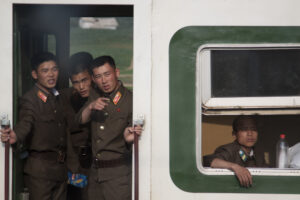This is the first part of a two-part series by Andrei Lankov on North Korean 'ghost ships'.
In recent years, inhabitants of fishing villages and towns located on the western coast of Japan have begun to make strange - and sometimes terrifying - discoveries on their beaches. They are increasingly coming across battered wooden ships, washed up on their shores. In some cases, the dead bodies of North Korean fishermen are discovered inside the hull, while in other cases, some members of the crew might be still alive, and are rushed to a local hospital. More often than not, however, the ships - bearing North Korean registration marks - are simply empty hulls devoid of any equipment or personal belongings.
This is the first part of a two-part series by Andrei Lankov on North Korean 'ghost ships'.
In recent years, inhabitants of fishing villages and towns located on the western coast of Japan have begun to make strange - and sometimes terrifying - discoveries on their beaches. They are increasingly coming across battered wooden ships, washed up on their shores. In some cases, the dead bodies of North Korean fishermen are discovered inside the hull, while in other cases, some members of the crew might be still alive, and are rushed to a local hospital. More often than not, however, the ships - bearing North Korean registration marks - are simply empty hulls devoid of any equipment or personal belongings.
Try unlimited access
Only $1 for four weeks
-
Unlimited access to all of NK News: reporting, investigations, analysis
-
Year-one discount if you continue past $1 trial period
-
The NK News Daily Update, an email newsletter to keep you in the loop
-
Searchable archive of all content, photo galleries, special columns
-
Contact NK News reporters with tips or requests for reporting
Get unlimited access to all NK News content, including original reporting, investigations, and analyses by our team of DPRK experts.
Subscribe
now
All major cards accepted. No commitments – you can cancel any time.











